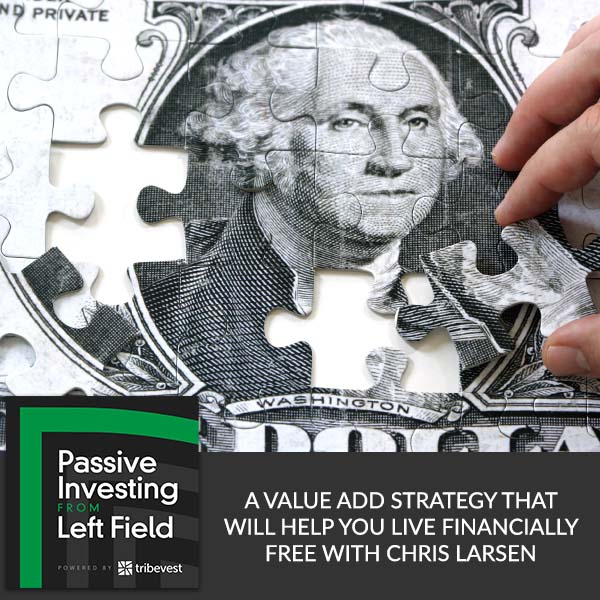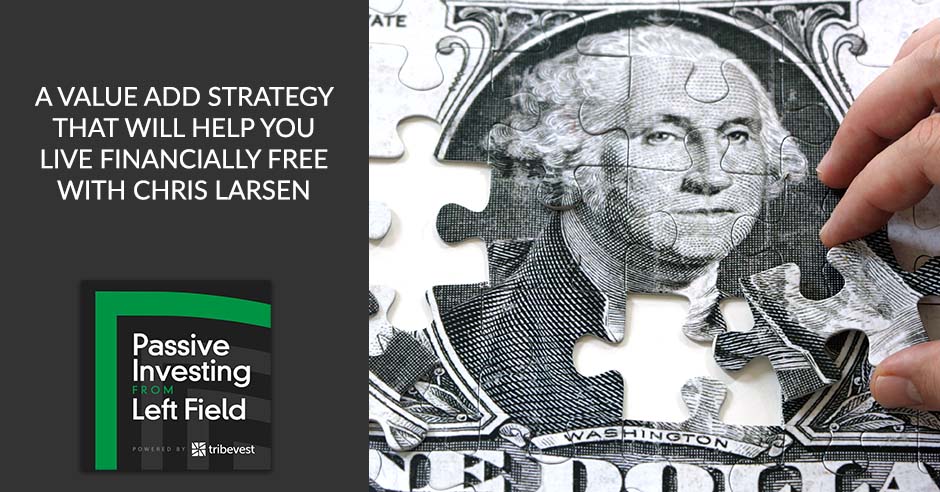
Most people want to live a life full of choices and without regret – it’s a lot easier to accomplish this if you are financially free. To get there, you need one of the two forms of capital – time or money. Knowing which you have can help you implement an investment strategy to help you achieve your goal of being financially free. Join Jim Pfeifer as he talks with Chris Larsen about how he used his capital to attain financial freedom. Chris is the founder and Managing Partner of Next-Level Income, through which he helps investors become financially independent. Learn more about the value of asking why, how life insurance is a strategy not an investment, and why car wash investments might be the next exciting thing in syndications! All that and more in today’s episode of Passive Investing from Left Field.
—
Listen to the podcast here
A Value Add Strategy That Will Help You Live Financially Free With Chris Larsen
I’m excited to have Chris Larsen with us. He is the Founder and Managing Partner of Next-Level Income through which he helps investors seeking financial independence by providing education and investment opportunities. He’s invested in development, private lending, distressed debt, commercial offices and ultimately, started syndicating multifamily. As we’ll discuss, he’s also into self-storage, mobile home parks and carwashes. There is a ton to discuss but first, Chris, welcome to the show.
Jim, I’m excited to be here. Thank you so much.
The first question I always ask is, what was your journey? How did you get into real estate and syndications? You’re a syndicator with at least four different asset classes. Can you talk about your journey, how it evolved and how you got to where you are?
I started with my first property, a single-family property when I was 21 years old in college. I talked about this in my book and you can get a free copy at our website, NextLevelIncome.com. If you click on the Book link and put your address in, I’ll even send you a copy or you can download the free eBook or audiobook there as well. As I talk about in the book, my father passed away when I was five and my mother remarried. My stepfather and my mom went on to buy a few single-family homes. My father had a commercial office building as well. He was more of an entrepreneur.
My stepfather and my mother were more savers. I knew that real estate was an asset class and could provide income. My mother was a teaching assistant. My stepfather was a contractor. I made more money the first year I went and got a W-2 job than they made combined that year to put things in context. During the ’90s when I was in college, the stock market was on an absolute tear. I got interested in the stock market. I learned how to day trade. I was making $5,000 some months as a junior in college trading in the stock market. The flip side of that was there were a lot of sleepless nights where I was laying there. My personality is such that it’s hard for me to turn my brain off especially when you have something as dynamic as that.
I remember laying there at 3:00 AM one morning and thinking, “I’m twenty years old. Is this investing? Is this what I want to be doing?” The short answer is no. I read 250 books on finance and investing. I went to different seminars and conferences. I ultimately settled on real estate. What I liked about real estate was that you could control the price at which you purchased the real estate. You could add value. You can leverage. I bought my first property. It was a $90,000 townhouse with $3,000 and my mom co-signed on the loan with me because I had a credit card but no credit to speak of.
That kicked off my journey and I bought multiple single-family properties over that period. After about fifteen years in that space, I picked my head up after going to work. I started a career in the medical device industry because I wanted to be an investor. If you want to be an investor, the thing is you have to have capital. You either have to have capital and whether that’s time. You create time capital or you have capital money to invest in a deal.

I ran out of capital very quickly so I went to work. I was like, “Let me become accredited so I can make some good money.” I put my head down for over a decade and when I picked it up after both my boys were born, I realized that those single-family properties weren’t producing the returns on the equity that I had in them. That’s when I switched to commercial real estate. That was a few years ago at this point.
There’s a lot there and the first thing is you said you read 250 books and went to all these seminars when you were still in college. How do you know that this is something that you want to research on how to build wealth? When I was in college, I was a Marketing and Finance major. I knew I wanted to do something in finance.
As soon as I got out of college, I got a job and started investing in the market but it never dawned on me to go read 250 books and go to a bunch of seminars on how to build wealth or create financial freedom. I thought, “Everybody gets a job and makes money. They then retire someday.” What was it that made you think, “I’m going to dig into this?” How did you know to dig deep into something to get yourself on the way to financial freedom or building wealth that way?
One of my favorite questions to ask people is, “What’s the big why?” I mentioned my father but more impactful was when my best friend passed away. He died between my freshmen and sophomore year of college. I was racing bikes at the time. I race bikes for over twenty years. I won this race. It was his memorial race for the second year in a row and I had no joy, whatsoever. I was like, “Why am I doing this?”
I went back to school and thought, “What am I doing? I’m riding my bike around. Is this what life’s about?” I made a pledge at that point. I said, “I do not want to live with regret. If I see a pretty girl, I want to ask her out.” If my friends say, “Chris, you should come on this trip,” I want to be able to do that. I wanted to experience life without regret. I also wanted to live a life that not only honored the life that I was given but also the life that my friend Chris didn’t have anymore.
What dawned on me was that you had to have money. If you were working at a job, that didn’t work. That set the stage for me to be an investor. That was the why. Here’s another piece and you’ve probably heard this multiple times. Robert Kiyosaki gave me a copy a few years ago of Rich Dad Poor Dad but that wasn’t my first copy of the book. That’s the one he gave me.
I was in a bookstore in Charlottesville, Virginia, as I always was. Every week, I’d go to the bookstore. Amazon had just started but I would still go to Barnes & Noble or Borders. I’d walk through and some people might say, “Who’s Borders?” They sold books like Barnes & Noble. I’m in the finance section. I was looking and perusing this gentleman. He is probably younger than us. He’s probably 40-ish. He looks at me and goes, “Are you looking for something to read?” I said, “I’m always looking for something to read.”
[bctt tweet=”Don’t live with regret. And you cannot experience a life without regret without money.” via=”no”]
He grabs Rich Dad Poor Dad off the shelf, holds it up and goes, “Have you read this?” I said, “No, I haven’t.” He goes, “Read this book.” This was probably in 1999, 2000 or somewhere around there. I read that and it was like, “This is what you have to do to have true freedom.” Through multiple conversations, it helped to set my mind and figure out that, “This is what I needed to do.” I went on to get an MBA in Portfolio Management. I learned a lot about traditional portfolio management. What dawned on me during that process was that most of the traditional investment advising was just sales.
Part of the reason I didn’t become a doctor, I thought about that was because I don’t think that traditional Western medicine treats the patient to be optimally healthy. I feel like the traditional investment advising landscape doesn’t teach you how to be financially independent. If you’re reading this, ask yourself, “How many financial advisors do you know and how many of them are financially independent? Why would you take advice from somebody that hasn’t created the outcome that you want?” That’s one of my other favorite questions. If somebody says, “I do this,” you say, “I teach people to do this. Have you done that?” If the answer is no, then you have to ask that individual some tough questions.
That’s a great way to look at it especially when you bring up the financial advisors and I’m a former financial advisor. I always was investing in what I was having my clients invest in but I hadn’t achieved retirement or financial freedom or the things that they were talking about. Also, financial advisors don’t talk about financial freedom or growing your wealth so you’re independent because if you’re independent, then you’re not relying on them.
The incentives can be backwards and in reverse.
That’s not to say that there’s no value in financial advisors. There is but you have to find the right person. They have to be aligned with your goals and be able to support what you’re doing in this “alternative investment arena” because it’s not alternative. That’s something that makes me crazy when people call it that but that’s a whole different conversation. I want to dive in a little bit into your take on multifamily. I’ve heard you say it’s the holy grail of real estate. I want to understand why are you so high on multifamily and what’s your outlook on it.
The main topic of my book is value-add multifamily. In my book and you can quote me on this too, I say, “There are a lot of great financial advisors out there. The average financial advisor provides more value to their clients than they charge.” Humans are prone to human nature. They sell at bad times and don’t stick to their plan. It’s the same reason that a personal trainer provides so much value. It makes a lot of sense if you have a good financial advisor but also in my book, I say that multifamily is the holy grail of real estate. I talk about the first thing is demographics.
I read an article from one of the big multifamily organizations that researches. They said, “We need 4.2 million apartments by 2035 to keep up.” That’s 250,000 units per year. We only started catching up to what we needed over the past decade. There’s a shortage of housing. When I started doing my research many years ago, we had this big uptick in renters from a couple of different groups. Millennials have been renting. Also, the fastest growing group of renters is 55-plus. They’re selling and capturing liquidity. Maybe they’re moving to where their kids or grandkids live. They’re like, “I don’t want to deal with my house anymore. I’m going to rent.”

You have Millennials. You have 55-plus. You have immigrants that have typically rented 70% or 75% of the time. Historically, we still have great immigration in this country coming in. It can be a real political hot potato so to speak but the fact of the matter is those groups rent in disproportionate numbers. What I like about value-add multifamily is I started the discussion of why I gravitated towards real estate and you have control.
You have what I like to call forced appreciation. I’m sure a lot of people reading are shaking their heads like, “You can create value.” Unlike a house where you buy a house and you hope and pray that the value goes up, your neighbor’s homes go up in value or maybe they go down in value. If you buy an apartment complex or any commercial piece of real estate, you create an increase in net operating income through an increase in revenue and a decrease in operational expenses through efficiencies. You can create additional value there.
There’s a cap rate, which is going to go into the equation of value but you have a lot more control over the value of a commercial asset than you do of a house. The underlying demographics, the supply and demand, which is Econ 101, the ability to create that forced appreciation and the tax benefits not much has the same types of tax benefits as multifamily, which means if you’re a high-income earner, this is part of the reason I fell in love with it. I realized that I don’t have to pay as much tax or any tax on the income and returns I’m making from my real estate as I was in my single-family properties.
That makes complete sense to me. I’m a big fan of multifamily as well. Our community is made up of passive investors that are investing in syndications. We evaluate the sponsor first. That’s the most important part of our evaluation. Trying to find the right financial advisor, you got to find the right sponsor. Once we have that, then we look at the market and the deal. What are some metrics that you think are most important when evaluating a multifamily investment? Are those metrics different for a passive investor than they would be maybe for an operator like yourself?
First off, the short answer, in my opinion, is no. They should be the same metrics. I agree with you 100%. The most important thing outside of the market is the operator because it’s like a marriage. If you’re an investor and you work with an operator, you have to get a divorce to stop working with that operator and the property has to sell. I also joke around. There was this episode of the Simpsons where they moved Springfield. They ruined Springfield so they moved the whole town of Springfield. I say, “You can’t do that in real life with your apartment complex.”
If you buy in a bad market, you’re screwed if you’re with an operator that is not performing and they’re typically bad markets or bad operators that pulled the deals down. I can talk about two dozen different metrics but there are some big ones. You want population growth. If you’re an investor and you say, “How do I find out what areas of the country are growing,” you can pay attention to the news and see what areas are coming up.
I usually put this on my website every year. There’s a study by United Van Lines and they show where net in and out-migration are occurring. That’s a simple way. You can say, “I want to invest in the Southeast because people were moving to the Southeast.” I was talking to an investor who lives in the Southwest and he’s concerned about the water supply there. He’s going to move because he’s concerned that they’re going to run out of water.
[bctt tweet=”The traditional investment advising landscape doesn’t really teach you how to be financially independent.” via=”no”]
I read that there are a few states that are having a significant water shortage again here. You may say, “Phoenix has a lot of great migration and job growth,” which is the second thing. You want migration and job growth but you may say personally, “These areas make sense but I don’t like this area for whatever reason.” Maybe you don’t like Texas for some reason or Florida and you don’t want to be there. You have to agree with it as an investor. From an analytical side, it’s population growth and job growth but not just job growth.
I like the diversity of employers. What I mean is you could have Houston. Houston many years ago was dominated by the energy industry, specifically oil. When the oil price went down 50%, Houston got smashed in terms of rent growth, vacancy and all that. I like to have more diversity of employers. I learned that the hard way by being a passive investor in Houston at the time. I didn’t get great returns in that deal.
As an investor, speaking as a limited partner and as a passive investor, I like to invest in areas and states that are business-friendly. That means I want preferably lower tax rates when it comes to businesses and personal income. I want states that are actively trying to get businesses to move in. This is probably pretty obvious but also, states and cities that are landlord-friendly.
If you are in a state where somebody can hang out in their apartment for a year before you can evict them and they’re not paying rent, it can affect your returns as well when the market turns down. Those were five things that I listed there. Population growth, job growth, diversity of employers, business-friendly and landlord-friendly environment. Those are the big five in my opinion that I would look for as a passive investor.
Most of those are market metrics. I find that interesting because when I asked the question, you said that outside of the market, the sponsors are the most important. You put the market up there as very important, which I agree with. In my mind, if you have a good sponsor, they’re probably picking a good market. It’s the chicken and the egg thing. Those are great metrics for a deal that you’re looking at that’s in a market. As a passive investor, how would you recommend people vet the sponsor and make sure that they’re going with a quality sponsor? What are the things you look for?
Everyone was making money over the last many years. I own some multifamily and handled it horribly. I managed it wrong and still made money. It’s not going to be the same thing going forward which is why I’m hiring asset managers. What questions am I asking? What am I looking for to know that I have a quality sponsor?
First off, you want to know the why. My favorite question is why. Why are you investing in this asset class? What are the reasons why? Why are you investing in this market? Do your due diligence and say, “This makes sense?” If you say, “I’m not familiar with Indianapolis,” then why are you buying an Indianapolis? What is your core competency? What’s your thesis behind there? What are the advantages that you bring to that market? That’s a good question.

“Why are you buying a specific asset type? Do you buy Class A, Class B, Class C and why?” Ask a sponsor the question to all those. Do all their answers align with what you’ve come up to that point? Do you have a referral to that sponsor? Do you know somebody that’s worked with that sponsor before? If you’ve come upon the sponsor organically in some way, shape or form, ask for referrals or try to track someone down that has been an investor.
When somebody says, “Chris, do you have anybody I can speak to?” I like to pick somebody that’s been investing with me since the beginning and has preferably invested in multiple deals and has maybe gone full cycle in one of our deals so they can say, “I invested with Chris years ago in this property. This is what happened. I also just invested.” They know the story behind that and hopefully, it’s somebody that’s not their best friend or something like that. I usually try to refer people that I didn’t know before they were investors.
How long have they been operating in the space? Are they a newer operator? Have they bought a deal and sold a deal? Those are great questions. You need to understand the basics of underwriting as an investor as well. What do you expect the rent growth to be over your pro forma period, let’s say five years? What has historic rent growth been? What do you expect it to be?
If it’s different historically, we may say, “We expect rent growth to be maybe 10% this year because the market’s producing 15% rent growth.” We may say we’re going to average 3% thereafter because that’s what we’ve seen historically even though it’s maybe 4% or 5%. Don’t look at returns until you’ve answered all these questions because I can hit some keys and change some cells on my Excel spreadsheet. I can make the returns look however pretty that I want to make them. You have to understand what’s going on behind the screen there with your sponsor or operator as far as assumptions and historical figures are concerned and then figure that out.
The other thing is what type of debt do they use? It’s not a very favorable debt market. For a lot of our properties, we’re putting debt on with the loan to a value of less than 60%. Somebody may say, “Chris, this operator has a better return,” but you look in there and they may have 80% leverage with bridge debt. That’s going to be a riskier loan.
That goes back to the basics where you say, “How risky is your operational plan?” That’s the last question I would ask. “What’s gone wrong? Aside from you stealing my money, what could go wrong?” If you’re with a bad operator, that’s probably how investors are going to lose money in this space if they’re defrauded, essentially.
People have made a lot of money over the last few years. If you’ve not vetted somebody properly, that’s not good. You say, “Tell me a story about a deal that didn’t go well. What did you learn from that? What do you think the risks are in this market over the next years?” You need an operator or a sponsor that can give you the pluses and the minuses. Finally say, “Is there anything that you would ask yourself if you were me?” Somebody is like, “I feel great. There are no issues there.” You always want somebody to say, “Here are the risks.” You might get a sniffle, have a sore throat or die but that’s what you want. You want honesty from your sponsors.
[bctt tweet=”The average financial advisor provides more value to their clients than they charge.” via=”no”]
That’s a great summary there. With the referrals, one interesting thing someone mentioned to me on the show a few episodes back was when they ask for referrals, they ask very specifically. They say, “I want a referral of someone who’s been in multiple deals with you or someone who’s been in your worst deal, the one that didn’t work out to pro forma.” Instead of getting your best friend, they’re asking for specific types of people for the referrals. Targeted referrals are a great idea.
I was excited when I heard that. You don’t always know somebody in your community that’s invested but if you ask for referrals in a targeted way, you can dig into it. Inflation, the economy and interest rates, a lot is going on. It’s a very uncertain time. How all that’s going on in the economy has affected your appetite for new deals? How has it affected your deals that you were maybe thinking of selling or refinancing? It’s a two-part question but related to the economy and all the chaos or uncertainty that’s going on.
Let’s take one step back. If you are investing in the stock market, you may say, “I’m on a dollar cost average. I’m going to consistently invest with a plan over 10 or 20 years.” An investor is wise to put together a strategy. Even if you have $1 million to invest, don’t invest it all at once. Put together a plan where you say, “I’m going to put this money in multiple deals over time to get into the market over time.” The answer to your question is, “Deals that we bought a few years ago, we’re selling earlier than maybe our five-year plan at a premium to what we thought we would.”
We’re returning a significantly higher amount to investors than they expected. That’s because 2021 was the best year in history for multifamily in every way, shape or form. What does that mean in 2022? In my 100th episode, I talked about some of the predictions that I see over the next few years. 2022, in my opinion, is like a hangover from 2021. Everything was too much. I read an article talking about housing prices and housing growth is slowing down. It was 18% or 19% in 2021 and in 2022, it’s 4.5%, which lo and behold, was the average 10 years prior to 2021. That’s not bad.
If you say, “My house is going to go up 4% or 5% over the next year.” “Is that 20% like it did last year?” “No.” “Is that healthy and sustainable?” “Probably not.” As a cyclist, you’re always trying to cut weight to be as fast as you can. If you want to lose weight and you can lose 1 pound a week, that’s healthy. If you lose 10 pounds in a week, you probably can’t keep doing that before something bad is going to happen. A business plan is not going to be sustainable if prices are going up 18% to 20%. Inflation pushed that.
What’s happened is and this is one of the benefits of multifamily is you’re hedged on both sides. Rents have gone up and when it does, it becomes more expensive to buy a home. The number one reason that we lose residents is they move out to buy a house. If they have to take longer to save up a down payment and their payment is higher, are they more or less likely to stay a renter? That’s good for the properties that we already own.
The bad thing is cap rates have not increased in line with inflation or the debt market. What we found is it’s hard to make deals work. Where investors may have expected X return, maybe they’re going to get 75% of what they thought they were going to get historically. That makes it harder to raise capital from investors because if investors have gotten spectacular returns and they look at the returns that we were showing them that are similar years ago, they’re like, “Those aren’t very good returns.” Both are the same as they were years ago.
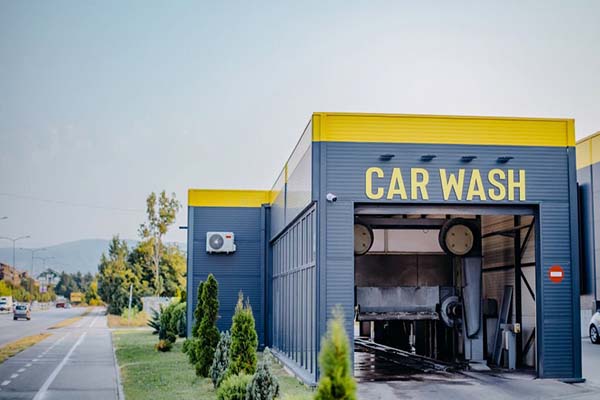
For anyone buying deals, you have to be conscious of that. If there isn’t an abundance of deals out there, you have to underwrite a lot more deals. You have to be at least more conservative with your loan to value because you can’t pile on a bunch of debt at 6%, where it used to be 4% because you’re going to get a lot of your profit eaten up by the debt service which is a concern. If you have a portfolio that you’ve built over the past few years, you’re benefiting from some of that.
The last piece of that is sometimes you have to expand your horizon when it comes to types of investments. That’s one of the reasons that we’ve expanded outside of multifamily to complement some of the benefits of multifamily with some of the higher cashflows from other investment types that are out there.
Let’s talk about that. You’re in self-storage, mobile home parks and carwashes. Talk a little bit about those asset classes and why you made the decision to get into them. We talked briefly about this but my biggest question for a sponsor who’s successful at multifamily or whatever else is they change asset classes. I don’t want to be your guinea pig. I want to watch and see if you’re as successful in mobile home parks as you were in multifamily but then other syndicators hire an expert who’s already done it for many years. I’m like, “That’s an easier transition for me.” Talk about both those parts. Why the new asset classes? What you’ve done to gain expertise so you can be an expert in those as you are in multifamily?
If you’re reading, write down to ask an operator that’s out there. We fall into the latter category, Jim. When I first started, it was me and one other partner. We did it all ourselves. If you read my book, what you’ll see is it’s all about value-add investing. You can take a value-add strategy. What I mean is you could build a new development. You can buy a property and improve operations or revenue. You could buy a property and do a heavy repositioning. There are all kinds of different ends. Value-add is like the Warren Buffett strategy of investing. It’s not super sexy but it’s super repeatable, in my opinion.
We take the value-add strategy that we used in multifamily. We deploy it in self-storage, mobile home parks, as well as carwash spaces. We partner with those that are experts in that space and bring them onto the team. I was in Tennessee and we’re buying a five-mobile home park portfolio over there. All my partner did was mobile home parks for many years. He has twelve parks and had dispositions so this isn’t his first go around there. It’s boring here with self-storage and mobile home parks. Self-storage has a lot of the same similar metrics that multifamily does.
If you think about this, people are in transition. If they’re moving, downsizing or trying to upsize but can’t, they’re going to need self-storage. A lot of the same people that are renting are using self-storage. If they’re moving into and out of markets, they’re going to be using self-storage when they move into those markets. Those same metrics apply. Self-storage rents tend to be a little stickier because they’re lower.
If you look at what performed the best in ’08 or ’09, it is self-storage. Don’t quote me on this but it was a mid-single digit return. Six percent was the returns in 2008 for self-storage and they performed very well and some would say even better than multifamily. If you look at the housing market, mobile home parks perform exceptionally well during downturns. I was talking to the owners and they said, “We bought these parks in 2004.”
[bctt tweet=”As an investor, put together a strategy. Even if you have a million dollars to invest today, don’t invest it all at once.” via=”no”]
I said, “What happened in ’08 and ’09?” They said, “Nothing,” like everything was fine. I said, “What about in 2020?” They said, “We noticed no change or whatsoever in our business plan, rent and collections, any of that.” They said that ’08 and 2020 were unremarkable in their opinions. They do flips and other stuff. They’re very familiar with that market. They’re not some naive operators that are out there.
I consider mobile home parks to be a very favorable portion of affordable multifamily. I’ve replaced Class C and lower Class B type properties. What I mean is those that are built in the 1980 or before or maybe even mid-’80s or before. I replaced those types of apartments with mobile home parks because in my opinion, as cap rates have dropped in those ’70s and ’80s vintage properties, the risk has gone up in those properties. We saw that in 2020 which is part of the reason I started pivoting before that but in mobile home parks, we did not. You get better returns in mobile home parks with lower risk compared to B and C-type assets multifamily.
My favorite this year is carwashes. The carwash space is interesting. You have a lot of different things happening that are very favorable to carwashes. At the current run and build rate, we need to build at the current rate we are. I’m specifically talking about express tunnels where you drive up and your car gets pulled through in 2 to 5 minutes. Your car is automatically washed and spit out the other side. You then either dry yourself or somebody dries it.
You have your vacuums and those sorts of things. If we continue to build at the current rate, it’s going to take us several years to reach the current demand. Over the past years, private equity has started to enter the market and drive prices up as they build portfolios. Do you know the major player that has more than 5% of the market in the United States? No one does because no one owns more than 3%.
If you look internationally, the definition internationally of a major player in a market or a specific industry owns 5% or more of the market. There is no single major player in the express carwash space so there’s an opportunity. Some players are trying to get to that point, which means there’s going to be massive consolidation as the money flows into this space. Seventy-five percent of these carwashes are owned by what I would call mom-and-pops that own less than five locations.
What does that mean? If you’re reading and you’re like, “I like buying from mom-and-pops owners that don’t know how to professionalize something,” there’s fat, meat and chances to operationally become more efficient and scalable. If you look at all those factors, to me, it’s a very exciting time. The challenge is who runs these? Unlike multifamily, you can’t just pull an operator off the shelf. We had to build a team.
We brought in a consultant and hire people from the locations that we buy but we had to build a leadership team to run this that can understand a couple of things. One is how to hire talent because unfortunately, a lot of people that run these carwashes, pay low market rates and are not getting the right talent. They don’t know how to sell so they’re not selling as well as they could, selling memberships specifically. We have an engineer that runs our team because the two big variables are chemicals and mechanics.

I have my biomechanical engineering degree so I can understand the inner workings of this but the issue is you could be using twice the chemicals that you need to be using to wash cars, which means you’re spending twice the money. If your spray angles are off, then you’re spending more money. If your conveyor belt is at the wrong speed, you’re spending more money. If you’re spraying for 10 seconds instead of only 3 seconds that you need to spray a chemical during the periods that the car’s going under there, you’re using 70% too much.
When you scale this across a large portfolio, then you can make some big differences there. The nice thing is the margins and the cashflows are substantial. When you combine that with the potential large exits when it comes to selling to some of these larger operators, the returns can be pretty exciting for investors.
I’ve been in the multifamily, self-storage and mobile home parks. I got in my first carwash deal. A few years ago someone mentioned carwash to me and I thought, “I don’t get it. That’s not a thing.” There are a lot of people jumping into the space and you’ve given some great reasons as to why but the carwash is different. It is an operating business. It is real estate because you might buy the property.
That is a great point. Maybe 25% or 30% of the business is the actual real estate but don’t be fooled. Don’t say, “Chris, if the returns are so much better, I’ll put all my money in here instead of multifamily.” That’s like investing in a value-add stock versus a growth stock, venture capital or something like that. You have to understand that you’re not investing in real estate. You’re investing in a business.
It gets a little confusing because we’re in this syndication world where when you say, “We’re doing syndication,” it was always talking real estate. ATMs blur that because is that really real estate? Maybe not but the carwash steps outside. That doesn’t mean avoiding it. It only means opening your eyes, recognizing that you’re in something different and asking all the questions you need to. I like how you get into these new asset classes. You’re either hiring your talent or partnering with an experienced operator, it sounds like. For me, that eliminates the, “I got to pause, wait and see.” I’m conservative so I’d probably still pause a little bit but I feel a lot more comfortable with that approach.
I spent a year doing due diligence and following operators before I made my first investment. To me, a year wasn’t that long of a period. I almost bought a carwash with my uncle many years ago. It wasn’t a space that was new to me and it popped up on the radar. I have coaching clients that own carwashes. I knew the margins and the levers. I wasn’t aware. When I learned about the private equity piece and the opportunity to purchase these assets that weren’t run well, that’s when it got exciting for me.
That’s when you’re layering the value-add strategy onto this space that has these margins and cashflows. If you say, “I’m going to keep investing in multifamily but layer on the carwash,” that’s going to boost my cashflows in my portfolio. Also, it’s probably going to ebb and flow a little bit different than the multifamily space.
[bctt tweet=”Mobile home parks perform exceptionally well during downturns.” via=”no”]
To me, that’s a nice strategy as you build out a portfolio. Always ask the operators, “Did you put your money in? How do you invest?” I’ll always tell my investors, “This is what I’m invested in.” My portfolio is not 75% carwashes. I would never expect an investor to do the opposite of what I’m doing and I wouldn’t recommend that. I don’t give investment advice. The investors have to do their due diligence.
The thing I liked about the carwash is the value-add in adjusting a nozzle and reducing chemicals. You are digging in and understanding that maybe this mom-and-pop put it together and didn’t have it calibrated. You make three different minor changes and all of a sudden your revenue is through the roof. I liked that asset class. I’m looking into it. I’m probably getting in a couple of more but it’s super interesting.
I want to pivot real quick as we’re on time here. You’re into infinite banking. I want to ask, how do you use that strategy? Infinite banking is when you use typically, whole life insurance but there are other kinds. You generate a lot of cash in these policies and then use that cash. Can you talk a little bit about how you use your life insurance infinite banking and what it does to your investments?
The strategy that we utilize is what we call the investment optimizer strategy. If you read my book, in chapter three, I talk about you need an opportunity fund. What are you doing with your cash in between deals? What sucks is if you had money sitting in the bank the last year, you have what I would call liquidity drag. You have this drag on your capital.
With inflation, which they’re saying 9.1%, I don’t think that’s accurate. Double digits are more accurate. If your cash is being eaten away at 5%, 10% and 15% a year, that’s a big drag on your portfolio. We started our policies right before my first son was born. We’ve been doing this for many years. We flow pretty much all of our investment income through our policies.
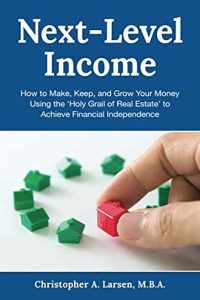
You build cash value in a specifically structured life insurance policy, move the capital from the policy into an investment and then cycle it back through the strategy. What’s nice is if you do it like the way we do it, you never have money sitting in the bank. It’s earning money inside the policies, which is typically 4%, 5% or sometimes higher percent annualized. You’re asking somebody whose father died at five, Jim. People are like, “Chris, I can get a better return somewhere else.” This is not an investment. This is a strategy. If you said to my best friend whose wife died after three years of having his policies, “What was your return on that policy,” he wouldn’t take too kindly to that. He bought it to protect his family in case something happened to his wife and unfortunately something did.
If you need insurance, then this is a strategy worth looking into, in my opinion. On our website, there’s a Banking link. We have a little white paper and video as well with one of our episodes. We talk specifically about how we’ve set up our strategies. You can always email me at Chris@NextLevelIncome.com. I can tell you how we did it. There are efficient ways to do it but you can add 1% to 2% to the returns of your portfolio versus only having this money in cash over 10 or 20 years. That can be very significant.
You nailed it. It is not an investment. It’s a strategy. I used to be a financial advisor so I sold life insurance and part of it was a 4.5% return. That’s not very good. It’s fine and tax-free but it’s a turbo booster for your other stuff. You can cycle money through. There are so many other uses so that was well said. I appreciate that. Here are the last two questions I always ask. The first one is, what’s a great podcast you listen to? You can’t use your own, which is the Next-Level Income show.
I’m going to go in a little different direction here. I alluded to this but there’s one thing I’m more passionate about than money and that’s health. Andrew Huberman has a podcast that is called Huberman Lab. It’s fantastic. Money can help you do a lot more things but if you want to live longer and better, that’s a great podcast. I love him.
He got me into taking cold showers and it took a while to get comfortable with that. It’s difficult but it does something. I got another podcast guest who recommended him and I listened to ten hours straight of his stuff. It’s interesting, for sure. The last question is how can readers get in touch with you if they want to connect with you?
We got a ton of information on the website, NextLevelIncome.com. We’ve got a free book there for you. We have our podcasts and blog. We have the information on banking. If there’s anything I mentioned and you want to reach out directly to me, it’s Chris@NextLevelIncome.com. I’m on LinkedIn, Facebook and all that. Feel free to reach out. Hopefully, I provided some information that can help you on your journey toward financial independence.
This was fantastic. It was great talking to you. I appreciate you being on the show. We’ll continue chatting.
I look forward to it, Jim. We’ll have you on our show here coming up soon.
Thank you, Chris. I appreciate it.
—
That was fun spending that time with Chris. It strikes me when someone who was in college decided to read 250 books and go to seminars and conferences because he wanted to figure out how to build financial wealth. When I was in college, I was avoiding books as much as possible because I have enough to do as a college student and all the scholastic and fun things I wanted to do. That was impressive to me.
Some of the things he said stuck with me. You need capital but he looked at it as two types of capital, time or money. There are different stages of your life when you have one or the other. That will influence your investment decisions. If you have time but no money, you’re going to do different things than if you have money but no time.
We are the money but no time crowd because we’re doing these passive syndications. You can’t do them without money but you can do them with limited time. That made a lot of sense to me and his mindset. He sadly lost a friend young. He then decided that he wanted to experience a life with no regrets and that’s phenomenal. That’s a great way to look at things. He’s out there doing things. He wants to have no regrets. He wants to do everything but he also realized that to live a life with no regrets, it’s a lot easier to do if you have money. You need money to live that way.
That’s why he read the 250 books and is getting into real estate. He’s doing the things that will make him money so he can live a life with no regrets. It isn’t the standard way of doing things. It’s not the stock market, the 401(k), a W-2 or all of that. There’s nothing wrong with all of that but he wants to do more. He wants to have more opportunities and live life with no regrets. It’s easier to do that when you have financial freedom.
I liked that he said his favorite question is why. This is probably a bad analogy but it reminds me of a three-year-old who’s constantly asking why. He does it more effectively but what that does is it allows you to ask all of the questions. When you’re screening an operator and they say something, you say, “Why are you in this market and this asset class?” It’s brilliant because it’s an open-ended question that they have to answer. On the sponsor screen that we shared with the infield, maybe one of the questions should be “why,” for everything they say because you can generate a great conversation that way. That was super interesting.
We ended up with life insurance. The thing he said that struck me from my days of being a financial advisor and selling life insurance is it’s not an investment. It’s a strategy. I tried to explain to clients, “It’s not an investment. It’s a turbocharge. It’ll help your other investments.” To call it a strategy is accurate and smart. It’s also an opportunity fund. It combats for him. Liquidity drags so you’re not putting your extra money in a bank earning 0.2% or whatever it is. Maybe it’s gone up a little bit but you’re earning 4.5% or 5%.
Look at it not as an investment. It’s a strategy and turbocharges your current investments. That’s a great way to look at it. We ended offline talking a bit more about the carwashes and I liked the way he talks about it. There’s a big market. He said that no one owns more than 3% of the entire market, which is very rare for any business. There are a lot of opportunities and the next few years might be huge for carwashes. That’s something that I’m going to look out for. I’m happy that I met Chris and we’re beginning this relationship. We’ll see where it goes from here. That’s all for this time. We’ll see you next time in the left field.
Important Links
- Next-Level Income
- Book
- Rich Dad Poor Dad
- 100th Episode – Previous Episode on Next-Level Income Show
- Banking
- Chris@NextLevelIncome.com
- Huberman Lab
- LinkedIn – Next-Level Income Show
- Facebook – Next-Level Income Show
About Chris Larsen
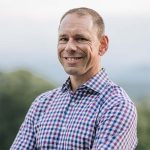 Chris Larsen is the founder and Managing Partner of Next-Level Income, through which he helps investors become financially independent through education and investment opportunities.
Chris Larsen is the founder and Managing Partner of Next-Level Income, through which he helps investors become financially independent through education and investment opportunities.
Chris has been investing in and managing real estate for over 20 years. While completing his degree in Biomechanical Engineering and M.B.A. in Finance at Virginia Tech, he bought his first single-family rental at age 21. During his subsequent career in the medical device industry, Chris expanded into development, private-lending, buying distressed debt as well as commercial offices, and ultimately syndicating multifamily properties. He began syndicating deals in 2016 and has been actively involved in over $400 million of real estate acquisitions.
In addition to real estate, Chris has invested in equities, oil & gas, and small business lending, as well as being active in Venture South, one of the nation’s Top 10 Angel Investing groups. Chris lives with his wife and two boys in Asheville, NC where he loves spending time with them in the outdoors and enjoying the food and culture that the region has to offer.
Our sponsor, Tribevest provides the easiest way to form, fund, and manage your Investor Tribe with people you know, like, and trust. Tribevest is the Investor Tribe management platform of choice for Jim Pfeifer and the Left Field Investors’ Community.
Tribevest is a strategic partner and sponsor of Passive Investing from Left Field.

